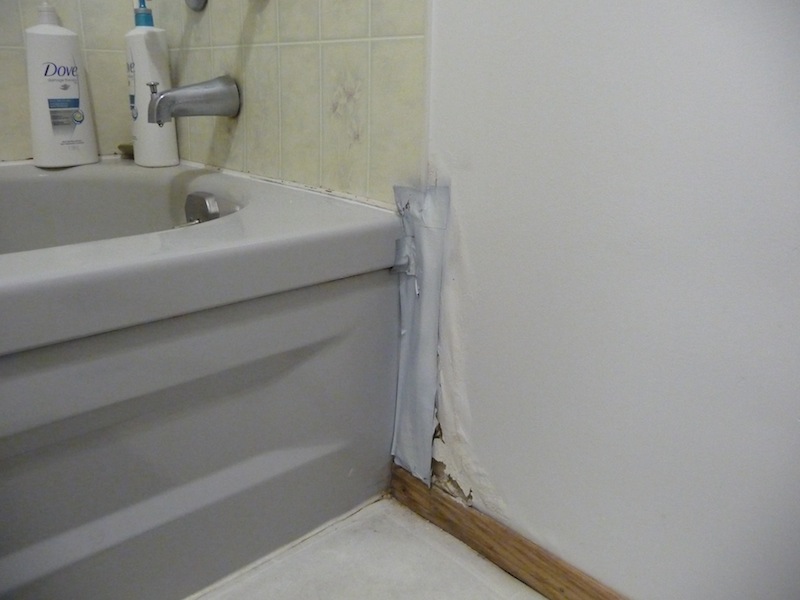Just How to Avoid Water Damage in Your Bathroom
Just How to Avoid Water Damage in Your Bathroom
Blog Article
The article listed below in relation to How to Fix a Water Damage Bathroom is really stimulating. Don't miss it.

The bathroom is incredibly susceptible for damp build-up as well as prospective water damages because of the constant use water in it. This post uses simple evaluation methods to aid identifying water damages hazards.
The frequent use of water in the bathroom makes it incredibly susceptible for damp build-up as well as prospective water damages. By checking it consistently, you can lower water relevant problems.
The adhering to collection of examinations is simple to do as well as must be done when in every three months in order to maintain your shower room in good shape and to stop prospective water damages brought on by the tub, the shower, pipe joints and also plumbing, sinks, cupboards, and the toilet
Do not neglect doing these evaluations and also be extensive while performing them. Remember that these easy inspections can conserve you a lot of cash by offering very early indications for water damages
Tub and Shower
The shower and also tub require unique attention and also upkeep. Check the floor tiles as well as replace if fractured. Make certain that there is no missing cement between the floor tiles. Examine and change broken caulking at joints where the wall surfaces satisfy the floor or the tub. Clogged drains pipes as well as pipes issues will protect against the bathtub from drying out and might indicate severe problems under the bathtub. Seek advice from an expert quickly to prevent architectural damage. Take notice of discolorations or soft locations around the bathtub wall surfaces as they may suggest an internal leakage.
Plumbing
Signs for water damages are difficult to identify considering that the majority of pipes are mounted inside the wall surfaces.
Pay special interest to floor covering and wall surfaces moisture as well as discolorations as they may show an invisible plumbing issue. Examine wetness degrees in adjoining spaces too.
Sinks and Cabinets
Sinks as well as closets are exposed to wetness and also humidity daily as well as are usually overlooked. Examine consistently under the sink and on the counter top over it. Repair any drip in the catch as it might suggest drain issues. Check out the sink, slow-moving draining pipes may show an obstructed drain. Replace sink seals if they are split or loosened.
The Toilet
The toilet is a prone water joint. Check the water lines and search for leakages around the commode seat, in the tube, and under the water storage tank. If you find any kind of indicators of moisture on the floor around the bathroom, look for leakages in the toilet edge and also tank seals.
Be aware that hanging bathroom bowl antiperspirants boosts the opportunities for obstructions.
Water Damage Signs In The Bathroom To Avoid Cleanup
Musty smell
This is one of the easiest signs to catch because musty smells are so odorous. The damp, earthy, moldy smell should be a big red flag. The smell will develop when moisture gets trapped in surfaces, and begins to facilitate mold growth. Leaking pipes under cabinets, inside walls, and behind shower fixtures will cause moisture to stay trapped and not dry, which will lead to mold growth and spread. As soon as you notice any musty smells in your bathroom, have it checked for hidden water damage and cleanup signs.
Visible mold
If the smell isn’t there to give it away, sometimes you will actually see mold growth. Finding mold in your bathroom is a serious problem, because mold is very harmful to your health. By the time mold growth is visible, it also means that water damage has already occurred and been present for some time. The only way the mold problem can be resolved is to find the source of the moisture and get it stopped. To safely and adequately remove mold, you need to have professionals handle the remediation. Do not waste any time in getting mold problems addressed, fixed, and sanitized so that you can protect you and your family from the many respiratory symptoms caused by mold exposure.
Damaged floors
Bathroom floors should be able to withstand some exposure to water while still remaining in good condition. However, when excess exposure or water leaks occur, they will begin to damage even the most water-resistant flooring. If you notice any cracking, bubbling, staining, or warping on your bathroom floors, there is probably a water leak somewhere causing the distortion. If you notice areas of the floor have become softer, or even have a spongy feeling, there is probably damage to the subfloor. Subflooring is typically made up of plywood. When plywood is exposed to water or moisture, it will absorb it. Once it has become saturated, the weight of the excess water will cause the wood to swell and soften. Check the floors in your bathroom frequently to catch any of these sings before they lead to damaged subflooring.
Changes on walls
When water leaks behind walls, it will cause changes in the drywall. Peeling plaster, blistering paint, and soggy wallpaper are all good indicators that excess water is building up behind the wall. Water leaking behind drywall will cause it to swell and be soft to the tough. If you start to notice gaps along the trim of your walls, or where tile meets the wall, it could also be a strong indicator that there is a leak behind the wall. Any changes, distortion, or damage on the walls should be evaluated as soon as you notice it to prevent further water damage and cleanup.

I am very eager about How to Fix a Water Damage Bathroom and I am praying you enjoyed our article. Appreciated our entry? Please share it. Help somebody else locate it. Thanks a lot for your time. Visit again soon.
Instant Quote Report this page